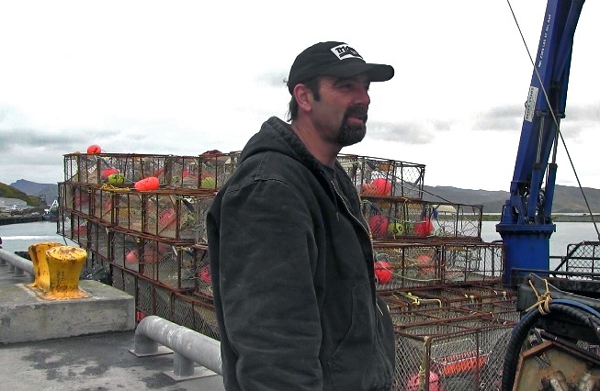
Wednesday marked the opening of the Bering Sea crab season. Quotas are up almost across the board. But one species that usually takes a backseat is outshining the rest – and that’s got some fishermen changing their game plans.
Two years ago, there was no harvest for Bairdi tanner crab. Without enough legal females in the water, it wasn’t safe to fish.
When the season reopened last year, the quota was kept low. But now, Fish & Game biologist Heather Fitch says Bairdi seem to have bounced back:
“If you compare it to the whole history of this stock, it’s at one of its peak biomasses,” she says.
And that’s made for the highest quota since 1993. About 15 million pounds of Bairdis are up for harvest in the Bering Sea. That’s five times as much as last year. Fitch says new survey data shows legal-sized Bairdi spread out all across the region.
It also shows a surprising amount of red king crab — about 50 percent more of all sizes compared to the past couple of years. Fitch says it’s almost like they came out of nowhere.
“Just based on not seeing it come into the population, it does raise a lot of questions as to — where have these crab been? Why have we not been seeing them?” she says. “I would say it raises more questions than answers.”
But the harvest level for red king crab isn’t based on those numbers alone. Managers plug data from the past several years into a model — which gave them a new, increased catch limit of 10 million pounds.
This will be the first time in years that there’s less red king crab up for harvest than Bairdi — but reds are still worth more. To get the payoff, fishermen will have to rush to meet a Thanksgiving deadline in the lucrative Japanese market.
And that’s why the F/V Pacific Sun was heading straight for king crab as the season opened Wednesday. Captain Jeff Hochstein says they’ll lease their share of Bairdis to another boat, like usual. He thinks others might want to do the same.
“I don’t know how many extra boats are going to do it versus what has done it in the past, but it could be a lengthy season if they don’t split it up a bit,” Hochstein says.
That’s the plan for the seven crabbers in the Mariner fleet. Moore Dye is the captain of the F/V Western Mariner. Their strategy?
“There’s so much of the quota that we’ll have three of our boats fishing [Bairdi] on the eastern side, two boats on the western side, and then two boats are going up to do St. Matthew’s blues,” Dye says.
Blue king crab, up north near St. Matthew Island, is small potatoes compared to the rest of the Bering Sea’s species. The blue king fishery was closed in 2013. And now, the quota’s the lowest it’s ever been.
For the most part, the fleet wants to end their season like normal — with snow crab. That quota has increased, too, though it wasn’t an easy decision for managers.
Heather Fitch says Fish & Game’s standard snow crab model has been unreliable lately. So this year, they turned to surveys — and settled on a quota that’s up about 25 percent.
With so much crab up for harvest this season, Bering Sea fishermen could be working well into springtime — and hopefully, reaping the financial rewards.
Annie Ropeik is a reporter for KUCB in Unalaska.




